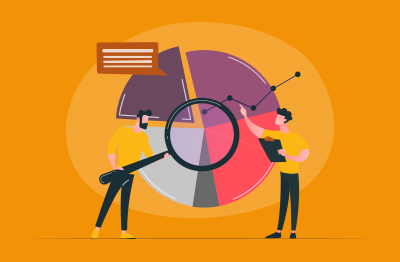What is IT Monitoring?
A common IT monitoring definition can be challenging to come by. Still, many experts agree that it entails using modern technology products and tools to ensure that all IT infrastructure performs according to expectations and resolves any detected issues impacting the network or equipment.
Why is IT Monitoring important?
IT monitoring is important for several reasons.
First, for organizations that collect and store customer data, monitoring the security of that data is part of their compliance responsibilities. Compliance isn’t optional, being a requirement of federal oversight organizations that aim to protect consumers from personal and financial harm.
In addition to maintaining legal compliance, IT monitoring also benefits organizations in the following ways:
- Making a good impression on customers by ensuring a smooth experience
- Enhancing productivity by providing maximum system speed and performance
- Identifying and eliminating threats before they negatively impact the organization
- Making better IT and business decisions with accurate, real-time data
- Better predicting future IT issues and needs
Although IT monitoring requires an investment, it can be worth it for organizations that want to adhere to compliance rules, protect their infrastructure, and maintain employee and customer efficiency.
Types of IT Monitoring
Because IT covers a wide range of technology categories, it’s necessary to employ different types of monitoring. Generally, organizations can use the following monitoring types to ensure coverage for their entire system.
- Availability: Also known as system monitoring, availability constantly observes servers, networks, and infrastructure to manage these components for maximum uptime and optimal performance.
- Web Performance: This kind of IT monitoring focuses on web apps and websites. It tracks information about availability, load times, system errors, and other critical performance aspects.
- Application Performance: APM is focused on customer-facing apps, with a special emphasis on quickly resolving issues. The goal of APM is to stop problems before they affect the end user. Consequently, APM monitoring tools often trigger automatic resolution actions for fast, efficient fixes.
- Application Programming Interface: Third-party developers rely on APIs to integrate critical software and functionalities into existing applications. API monitoring tracks performance to ensure acceptable uptime and resolves issues before they can impact users.
- Real User (RUM): While simulations can help identify some issues, it’s always important for IT professionals to understand what happens when real users interact with a website or application. This type of monitoring provides lagging data regarding real-world issues that users may encounter after application deployment.
- Business Activity: This type of monitoring tracks key performance indicators to provide important business intelligence, such as website sales, page visits, bounce rate, application downloads, and more.
- Security: Business security monitoring watches over business infrastructure to detect and thwart possible cyber threats before they cause a data breach or result in costly downtime.
IT Monitoring tools
Broadly speaking, there are three types of IT monitoring tools:
- Observation: Provide basic performance reporting
- Analysis: Provide insight based on data collection
- Engagement: Automate actions (such as reboots or backups) based on data and insights
All of these aspects of IT monitoring matter, and many organizations employ more than one type of tool or rely on multi-faceted solutions to cover all of these functions.
